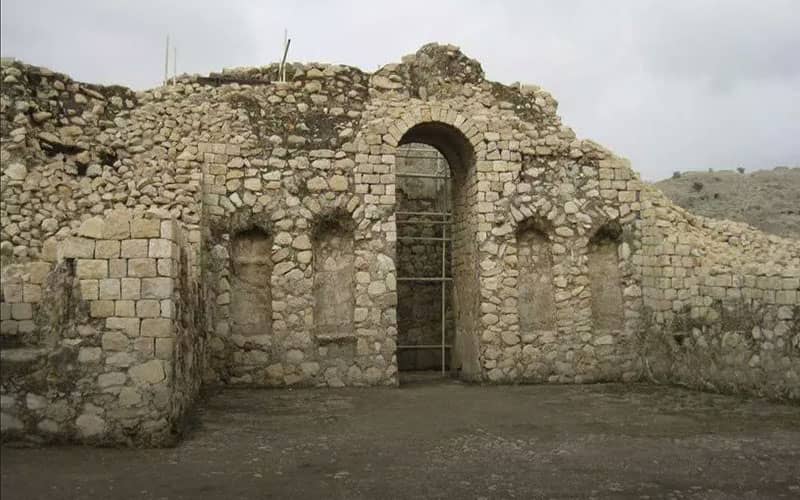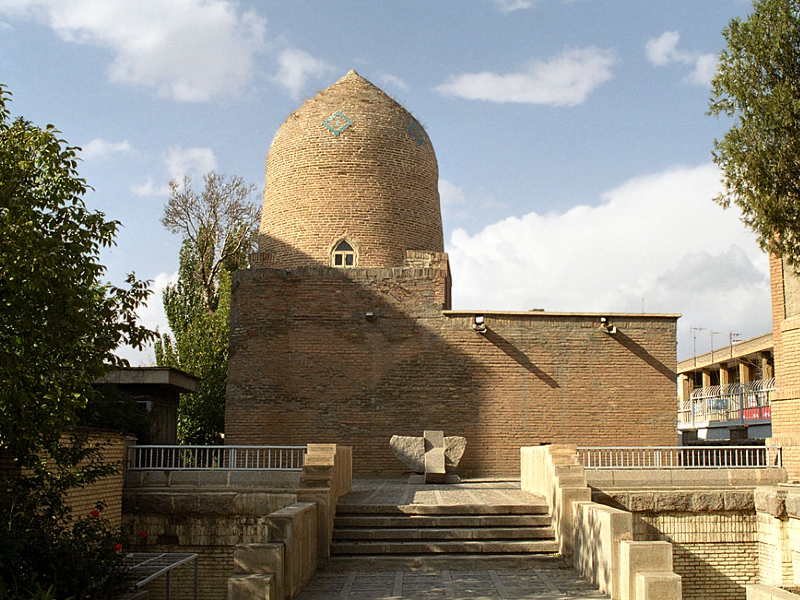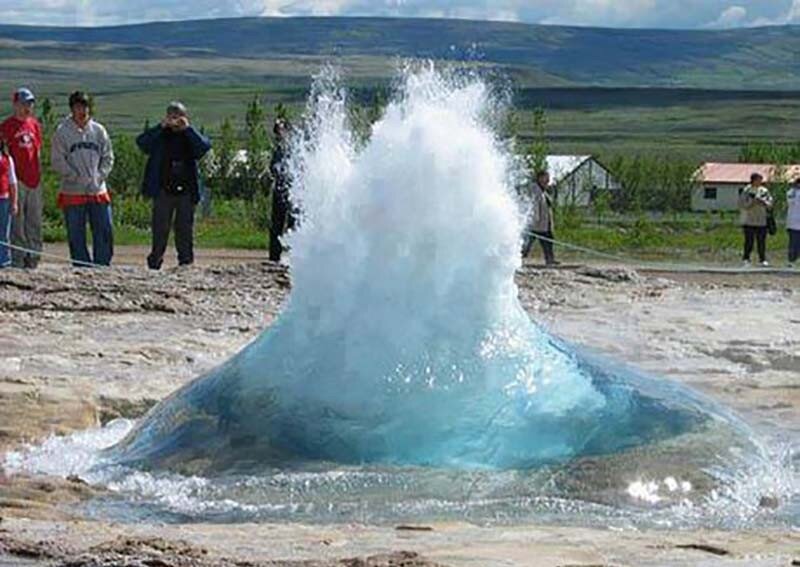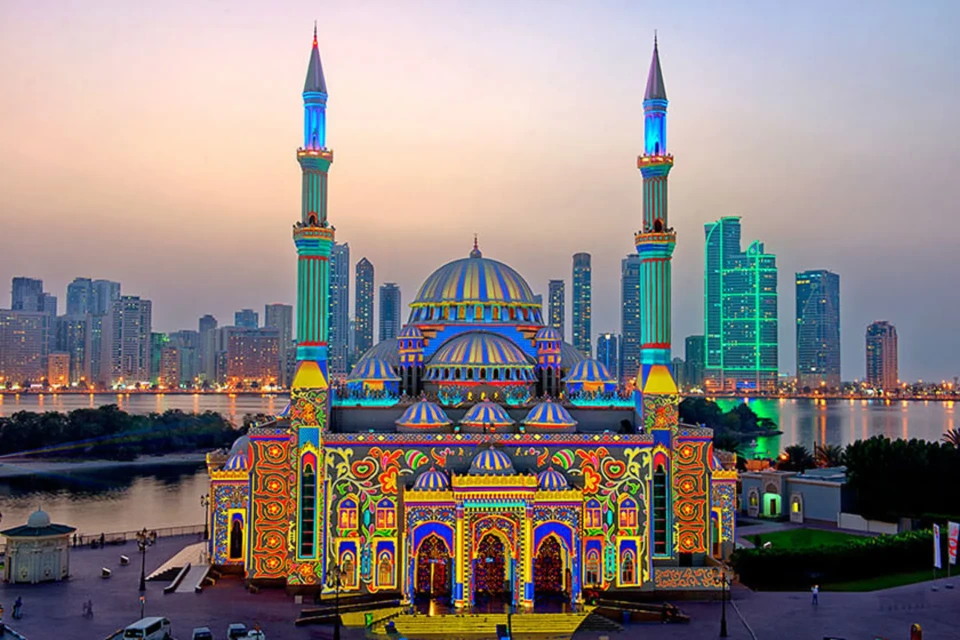Salmas Churches in West Azerbaijan
“In this article, we aim to introduce the churches of Salmas in West Azerbaijan. Considering the diverse historical past, Salmas has had a significant presence of Christianity in the past, and these numerous churches in the region serve as evidence of this historical connection. Join us with Gulf City Pride to explore the peculiar and intriguing history of this Middle Eastern region until the end.”
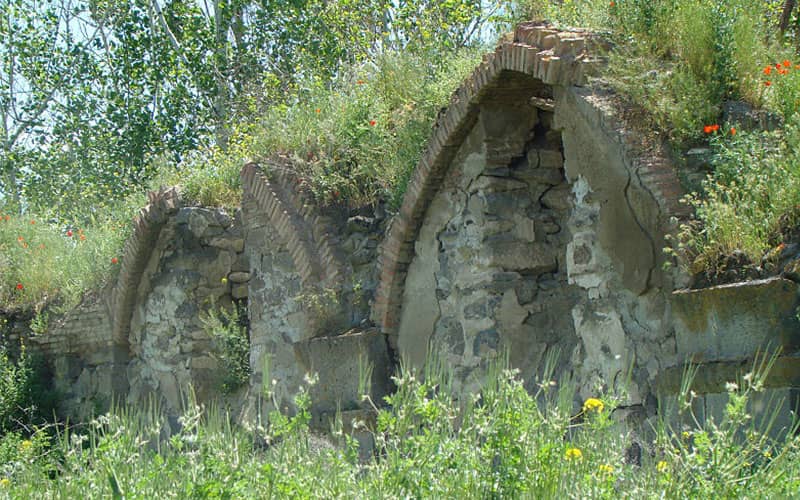
“Salmas is one of the historical cities in West Azerbaijan province with a history that dates back several thousand years. Considered as one of the significant and pivotal cities in the historical and political developments of Iran, Salmas gained its distinction as the first chessboard city in Iran after a severe earthquake led to its reconstruction based on modern urban planning principles.
This historically and geographically important city, situated in the land of Azerbaijan, boasts numerous tourist attractions and points of interest. Salmas’s attractions are influenced by its pristine nature and rich historical background, enticing many tourists to explore its wonders. Join us as we delve into the highlights of this beautiful city.
Mar Sarkis Church
Address: Salmas County, Central District, Khosroabad Village
Mar Sarkis Church, located in Khosroabad Village, was built during the Qajar period. The name ‘Mar Sarkis’ is derived from the bishop of this church in the 16th century. Local beliefs suggest that during the Sassanian era, when King Khosrow Parviz brought the Holy Cross of Christ to Iran, it was kept in this church and later presented to the Romans during the Iran-Rome peace treaty. Constructed with carved Azari stones and lime mortar, the church features two classical Syriac inscriptions. Still active today, Armenians utilize the church.
Mahlem Church
Address: Salmas County, Central District, Mahlem Village
Mahlem Church, situated in a village of the same name, consists of an entrance gate and several partially collapsed chambers. Dating back to 1259 Hijri, this church is registered as a national heritage of Iran.
Surkis-e Moghaddas Church
Address: Salmas, Qaleh Sar Village
Surkis-e Moghaddas Church, near Salmas, has a history dating back to 1185 Hijri. Built by the local Armenians, the remaining ruins display Armenian inscriptions and cross motifs. A nearby cemetery, unfortunately looted, surrounds the church, with its roof and the northern and northwestern walls now collapsed.
Qezeljeh Church
Address: Salmas, Qezeljeh Village
Qezeljeh Church, located in the village of the same name, is a rectangular-shaped structure built during the Qajar period. The church features three light catchers in the southern, eastern, and above the mihrab’s walls. Comprising black Azari stones, the church is registered as a national heritage of Iran.
Haftavan Church
Address: Salmas County, Haftavan Village
Dating back to the 13th and 14th centuries AD, Haftavan Church is located three kilometers south of Salmas. Built during the Safavid era on the orders of Shah Abbas Safavi, it stands out as one of Salmas’s remarkable sights. The church’s unique feature is its construction using black Azari stones, intricately carved with beautiful designs. The church, with a central dome resembling a twelve-sided pyramid, has several Armenian inscriptions, suggesting its origins in the 13th and 14th centuries. Damaged by an earthquake in 1309, it underwent restoration and reconstruction afterward.

Akhteh Khaneh Church
Address: Salmas County, Akhteh Khaneh Village
Akhteh Khaneh Church in the southwest of Salmas, situated in a village of the same name, dates back to 1269 Hijri. The rectangular-shaped plan includes four round brick columns in the main hall. The central brick dome above these columns has since collapsed and rests on the ground. The church also features two additional smaller domes. Notable for its simple architectural style, the church’s arrangement of bricks adds to its aesthetic appeal. Materials used in its construction include brick, limestone, and gypsum. Three light catchers are positioned in the southern and three in the eastern walls.
Join us as we explore these historical and cultural treasures, unraveling the captivating history of Salmas and its unique churches.”
Qareh Bagh Church: A Historical Marvel in West Azerbaijan Province
Qareh Bagh Church, situated in the village of Qareh Bagh near Salmas, is a notable attraction in West Azerbaijan Province with roots dating back to the Ilkhanid-Safavid period. Similar to many churches in Azerbaijan, it follows the basilica style with three aisles and columns, comprising sections for the congregation, choir, and the sanctuary.
This historical church was officially registered as a national heritage of Iran on November 22, 1362 Hijri (Solar) with the registration number 1650.
Key Points about Qareh Bagh Church:
- 1. Location of Qareh Bagh Church:
Qareh Bagh Church is situated in the village of Qareh Bagh, approximately 75 kilometers northeast of Urmia and 35 kilometers southeast of Salmas. The village is about five kilometers away from the shores of Lake Urmia.
Address:West Azerbaijan Province, 35 kilometers southeast of Salmas, Qareh Bagh Village - 2. Introduction to Qareh Bagh Church:
Qareh Bagh Church, also known as Surp Petros Church, is considered one of the attractions of Salmas. The church consists of a rectangular hall, covering an area of approximately 170 square meters. While most of the original structure has been lost over time, the remaining southern wall provides a glimpse of the past. - 3. History of Qareh Bagh Church:
The construction of Qareh Bagh Church dates back to the Ilkhanid-Safavid period, showcasing the enduring historical significance of this site. The church’s history and cultural importance contribute to its recognition as a national heritage. - 4. Architecture of Qareh Bagh Church:
The one-story stone building features a high ceiling, raised arches, and an impressive sanctuary. The architectural elements, including the subtly illuminated interior, create an inviting and spiritually rich ambiance within the church. - 5. Different Sections of Qareh Bagh Church:
Qareh Bagh Church comprises three main sections: the congregation area, the choir area, and the sanctuary. The architectural layout emphasizes simplicity and functionality, embodying the essence of traditional church design. - 6. Visiting Qareh Bagh Church:
Visitors to Qareh Bagh Church can appreciate its historical and architectural significance. The church’s serene atmosphere, adorned with remnants of its past, offers a unique experience. Additionally, the western part of the church houses a large Christian cemetery with stone gravestones, preserving the memory of the Armenian community.
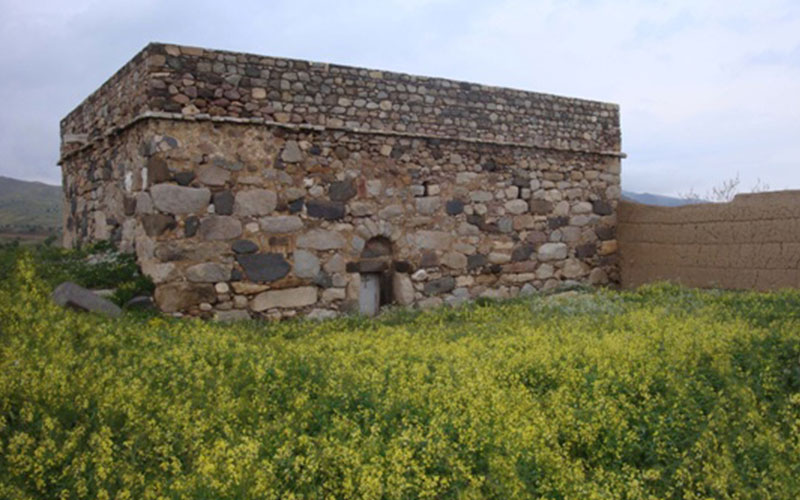
Qareh Bagh Church stands as a testament to the rich cultural and religious heritage of West Azerbaijan, inviting visitors to explore its captivating history and architectural beauty.
History of Qareh Bagh Church
Timber Frame in a Stone Structure
The exact date of the initial construction of Qareh Bagh Church is not known. The current building, based on an inscription on the western wall of the church, was built in 1655 AD, coinciding with the reign of Shah Abbas II Safavid (1077-1052 Hijri). While it is possible that the church is older, there is no precise and reliable evidence in this regard.
The inscription placed on a rectangular stone cube above the entrance on the southern wall of the church is written in Armenian script:
Built by Cheriko Grigor (Gregor) Katib in the year 1655.
The church was restored by Nerses Lampraks in 1785.
Another inscription on the eastern side of the southern wall translates as:
The church was abandoned with the migration of Armenians from the village and gradually fell into disrepair. Eventually, with the efforts of cultural heritage authorities in West Azerbaijan, it was registered as a national heritage in 1378 Hijri Shamsi. Subsequently, in 1378 Hijri Shamsi, it underwent substantial restoration by the cultural heritage authorities, addressing the upper parts of the walls, the interior floor, ceiling, and other sections.
The church, situated near a Christian cemetery with rough-cut stones and a quadrilateral shape to the west of the building, has remnants of Armenian brick and residential structures that have endured the test of time.
Architecture of Qareh Bagh Church
Stone Structure on Lush Ground
The church, with a rectangular plan measuring 8.80 by 15.10 meters, has a central axis in the east-west direction. The arrangement of its elements is based on the direction of the sanctuary. It is leveled with the surrounding terrain and has a main entrance on the southern side. The church, like many others in Azerbaijan, follows the basilica style with three aisles and columns. Inside, four square-sectioned columns and two half-columns on the western wall are noticeable, dividing the space into three naves: the central nave and the side naves.
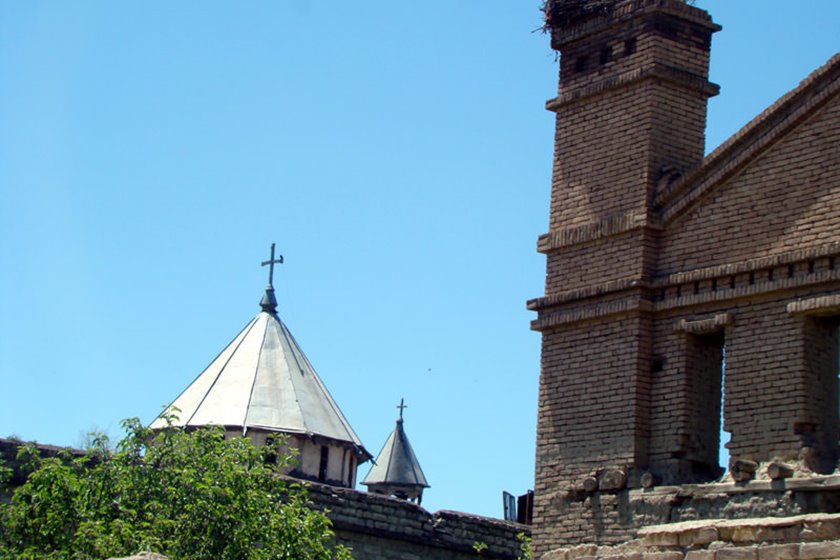
The central nave is wider than the two flanking naves. These naves are arranged side by side along the east-west axis of the church. The four main columns provide support for the dome, and, consequently, there are Romanesque arches between them both longitudinally and transversely. Additionally, two half-columns, leaning against the western wall, bear lateral pressures.
The semicircular sanctuary of the church is located in the eastern part, above and parallel to the central nave. Access to the sanctuary is through three steps, integrated into two niches on either side of the sanctuary. Two square-shaped side rooms are attached to each side of the sanctuary, featuring arched niches on the adjacent walls.
Different Sections of Qareh Bagh Church
In Iron, a Cross-Shaped Building
Qareh Bagh Church is divided into three sections: the area for the congregation, the choir area, and the sanctuary. The architect employed a difference in floor levels to distinguish between these three sections. The choir area, starting approximately 6 meters from the eastern side, is elevated above the congregation area. The sanctuary is further elevated above the choir area, providing a larger space for worshippers compared to the congregation area.
Exterior View of Qareh Bagh Church
Simple External Walls
The external walls of the church lack elaborate decoration and are constructed with rubble stones and very large flagstones. The dimensions of the stones in the lower sections are often several times larger than those in the upper sections of the walls. Some of these flagstones may have originated from gravestones in the cemetery surrounding the church, incorporated into the walls during later repairs. Moreover, some of these stones may be remnants of ancient structures associated with the church, integrated into the church walls during subsequent repairs.
The sole entrance to the church is on the southern wall and includes a low arch made of rubble stones. The entrance frame is also adorned with four rectangular-cut cube stones. On the southern side, two small windows, on the eastern wall, three windows, and on the western wall, one window contribute to the internal lighting of the church.
Interior View of Qareh Bagh Church
Interior Walls of the Church
The interior walls of the church are constructed using rubble stones and lack specific decorations. In some parts, such as the sanctuary vault, the effect of two layers is visible, with the lower layer made of inferior materials and coarse gypsum mortar containing sand grains. The upper layer is a thin layer of smooth gypsum plaster, although in many areas, this layer has been lost.
The columns of the building are made of stone and stand at a height of approximately 2.30 meters. These columns are connected to each other with load-bearing Romanesque arches. Furthermore, a beautiful Romanesque arch is constructed above the sanctuary using rubble stones with a mouth diameter of three meters. The main entrance of the side rooms is crafted with four rectangular-cut stones of Azari type, featuring multiple cross patterns and geometric shapes.
Qareh Bagh Church Dome
The dome of the church has a squinch shape and is built above the congregation area. It consists of both fine and coarse rubble stones with gypsum mortar, skillfully arranged together. Above the main dome, there is a stone skylight with a four-sided structure to enhance the internal lighting of the church. The weight of the dome is transferred to the thick columns in this section through load-bearing Romanesque arches.
Several large squinches are placed at the base of the main dome and also in the upper part of the entrance to the side rooms. These squinches are installed horizontally inside the wall in a way that their openings face the internal space of the church.
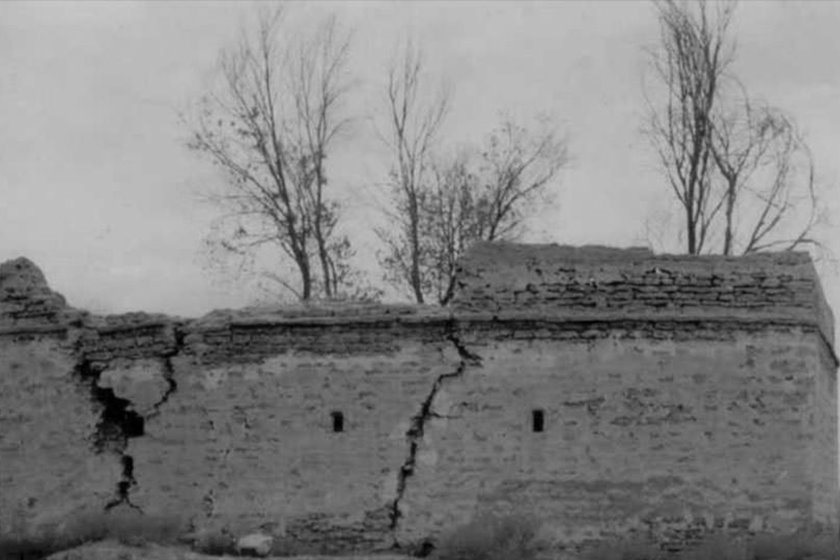
Considering their limited number, it cannot be conclusively asserted that these squinches play a significant role in the acoustic structure and sound absorption during religious ceremonies and prayers. However, due to the small number, this feature cannot be reliably confirmed.
Visiting Qareh Bagh Church
This church is considered one of the historical attractions, despite being listed as a national heritage; it has not received much attention. When visiting, please refrain from littering and leaving graffiti.
Visiting this church is free of charge.
The church is open to visitors at all hours of the day.
Frequently Asked Questions:
1. Where is Qareh Bagh Church located?
Qareh Bagh Church is situated in Qareh Bagh village, approximately 75 kilometers northeast of Urmia city and 35 kilometers southeast of Salmas city.
2. Is Qareh Bagh Church a registered national heritage?
Yes. This church was registered as one of Iran’s national heritage with registration number 1650 on November 22, 1362 Hijri Shamsi.
3. When was Qareh Bagh Church built?
The exact date of the initial construction of Qareh Bagh Church is not known. The current building, as indicated by an inscription, was built during the reign of Shah Abbas II Safavid (1077-1052 Hijri).
4. What architectural style is used in Qareh Bagh Church?
Qareh Bagh Church follows the basilica style with three aisles and columns, a common architectural style for many churches in Azerbaijan.
Holy Gevork Church in Haftavan Village
The Holy Gevork Church in Haftavan Village, located in the jurisdiction of Salmas County, has a historical background dating back to the Safavid era. Constructed under the orders of Shah Abbas Safavid, the building exhibits intriguing features, notably the use of black Azari stones meticulously carved with exquisite craftsmanship. With a central dome, the church is designed and built in the form of a twelve-ribbed pyramid, featuring several inscriptions at its entrance. These inscriptions, engraved in Armenian script, depict religious images, providing insights into the original construction period (13th and 14th centuries AD). After suffering damage from the earthquake of 1930, this ancient structure underwent restoration and reconstruction. On 19 Esfand 1380 (March 10, 2002), it was registered as one of the notable sites in Salmas in the list of Iran’s national heritage with registration number 4842.
Holy Gevork Church in Haftavan Village
The Holy Gevork Church in Haftavan Village, located in the jurisdiction of Salmas County, has a historical background dating back to the Safavid era. Constructed under the orders of Shah Abbas Safavid, the building exhibits intriguing features, notably the use of black Azari stones meticulously carved with exquisite craftsmanship. With a central dome, the church is designed and built in the form of a twelve-ribbed pyramid, featuring several inscriptions at its entrance. These inscriptions, engraved in Armenian script, depict religious images, providing insights into the original construction period (13th and 14th centuries AD). After suffering damage from the earthquake of 1930, this ancient structure underwent restoration and reconstruction. On 19 Esfand 1380 (March 10, 2002), it was registered as one of the notable sites in Salmas in the list of Iran’s national heritage with registration number 4842.

